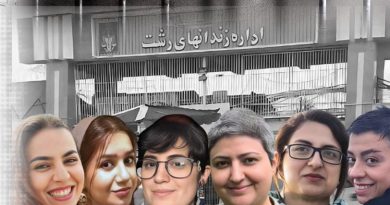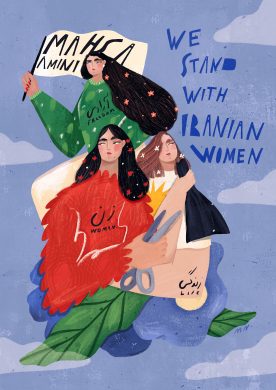The Islamic Revolutionary Guard Corps (IRGC), the regime’s primary enforcer, has systematically targeted Iranian women through gender oppression, violence, and fear tactics. From compulsory hijab laws to brutal crackdowns on protests, the IRGC plays a central role in maintaining state control over women’s lives.
Iranian women, however, have refused to submit, leading historic protests and defying gender apartheid despite the severe consequences. Their resistance has exposed the IRGC’s role in enforcing patriarchal oppression, sparking global outrage and solidarity.
This investigative report explores:
• How the IRGC enforces gender oppression through legal, physical, and digital control mechanisms.
• The tactics of fear used to silence women activists and protesters.
• Stories of brave women resisting IRGC oppression despite arrests, torture, and threats.
• The international response and how the world can hold the IRGC accountable.
1. The IRGC’s Role in Gender Oppression
A. Controlling Women Through Forced Hijab Laws
The compulsory hijab is more than just a dress code—it is a symbol of the regime’s control over women. The IRGC plays a direct role in enforcing:
• Street patrols to harass and detain women for “improper” hijab.
• Surveillance cameras in public places to track and fine women who violate dress codes.
• Harsh prison sentences for women who remove their hijabs in protest.
Since 2022, the hijab protests sparked by Mahsa Amini’s death have seen thousands of women arrested, beaten, and killed by the IRGC and its affiliated forces.
B. IRGC’s Crackdown on Women Protesters
The “Women, Life, Freedom” movement has been met with brutal force, as the IRGC and its paramilitary wing, the Basij, employ:
• Live ammunition and tear gas against peaceful demonstrators.
• Mass arrests of women, journalists, and activists.
• Sexual violence as a tool of repression inside IRGC-controlled prisons.
Despite these dangers, Iranian women continue to lead the resistance, proving that fear tactics are failing to silence their calls for freedom.
2. Inside the IRGC’s Prisons: Violence Against Women Detainees
A. Evin and Qarchak: Prisons of Torture
Women arrested for protesting or activism are often sent to Evin Prison or Qarchak Prison, where they face:
• Severe beatings and torture by IRGC interrogators.
• Psychological abuse, including threats of execution.
• Sexual violence, a documented method used against women prisoners.
Many prisoners are forced to confess to false crimes under torture, only to be sentenced in sham trials.
B. The Stories of Women Resisting Behind Bars
• Narges Mohammadi, a Nobel Peace Prize laureate, continues to resist from inside prison, exposing IRGC’s crimes against women.
• Nasrin Sotoudeh, a human rights lawyer, has been repeatedly jailed for defending women arrested for hijab protests.
• Sepideh Gholian, a journalist, has been tortured, released, and re-arrested multiple times for speaking out.
These women, along with thousands of unnamed political prisoners, are the true face of resistance against the IRGC.
3. The IRGC’s Digital Repression: Controlling Women Online
A. Cyber Surveillance and Internet Censorship
The IRGC’s cyber units monitor and suppress online dissent by:
• Shutting down the internet during protests.
• Tracking activists’ social media activity to target them for arrest.
• Hacking accounts of female journalists and spreading disinformation.
Despite this, Iranian women have used digital tools to expose state brutality and connect with global supporters.
B. The Fight Against IRGC’s Online Propaganda
Women-led campaigns like #WomenLifeFreedom and #No2Hijab have successfully countered the IRGC’s attempts to suppress the truth. Exiled activists, such as Masih Alinejad, continue to amplify Iranian women’s voices, proving that censorship cannot erase their resistance.
4. The Global Response: Holding the IRGC Accountable
A. International Condemnation and Sanctions
Governments worldwide have responded to IRGC’s gender oppression with:
• Sanctions on IRGC commanders involved in human rights abuses.
• UN investigations into crimes against women in Iran.
• Calls for the IRGC to be designated a terrorist organization in Europe and beyond.
However, stronger actions are needed to protect Iranian women and dismantle IRGC’s repressive apparatus.
B. How the World Can Support Iranian Women
1. Recognize the IRGC as a terrorist organization globally.
2. Provide digital tools to help Iranian women bypass internet restrictions.
3. Increase legal pressure on the Iranian regime through international courts.
4. Amplify Iranian women’s voices through media and cultural platforms.
The fight for women’s rights in Iran is part of a global struggle—and it requires global solidarity.
Conclusion: Women Will Break the IRGC’s Reign of Fear
Despite decades of repression, Iranian women have never stopped fighting for their freedom and dignity. The IRGC’s gender oppression, enforced through violence and fear, is being challenged daily by courageous women who refuse to submit.
From street protests to prison cells, from social media activism to global advocacy, Iranian women are leading the charge for a free and democratic Iran.
The world must stand with them, not only in words but through action—because the future of Iran depends on the courage of its women.
Join Our Newsletter!
Stay informed with the latest updates, news, and ways to take action in the fight for justice and global security. Sign up now to get updates delivered straight to your inbox!




